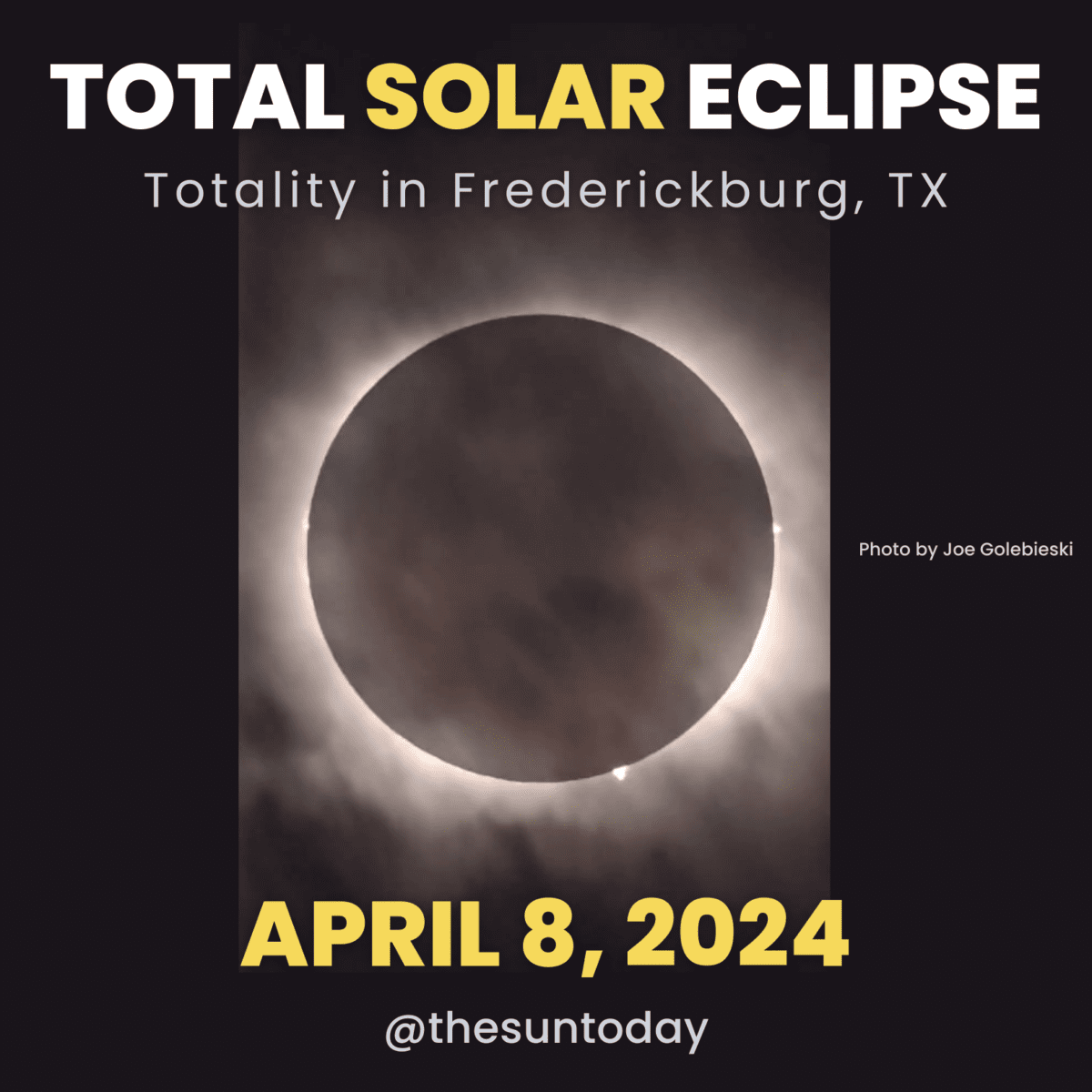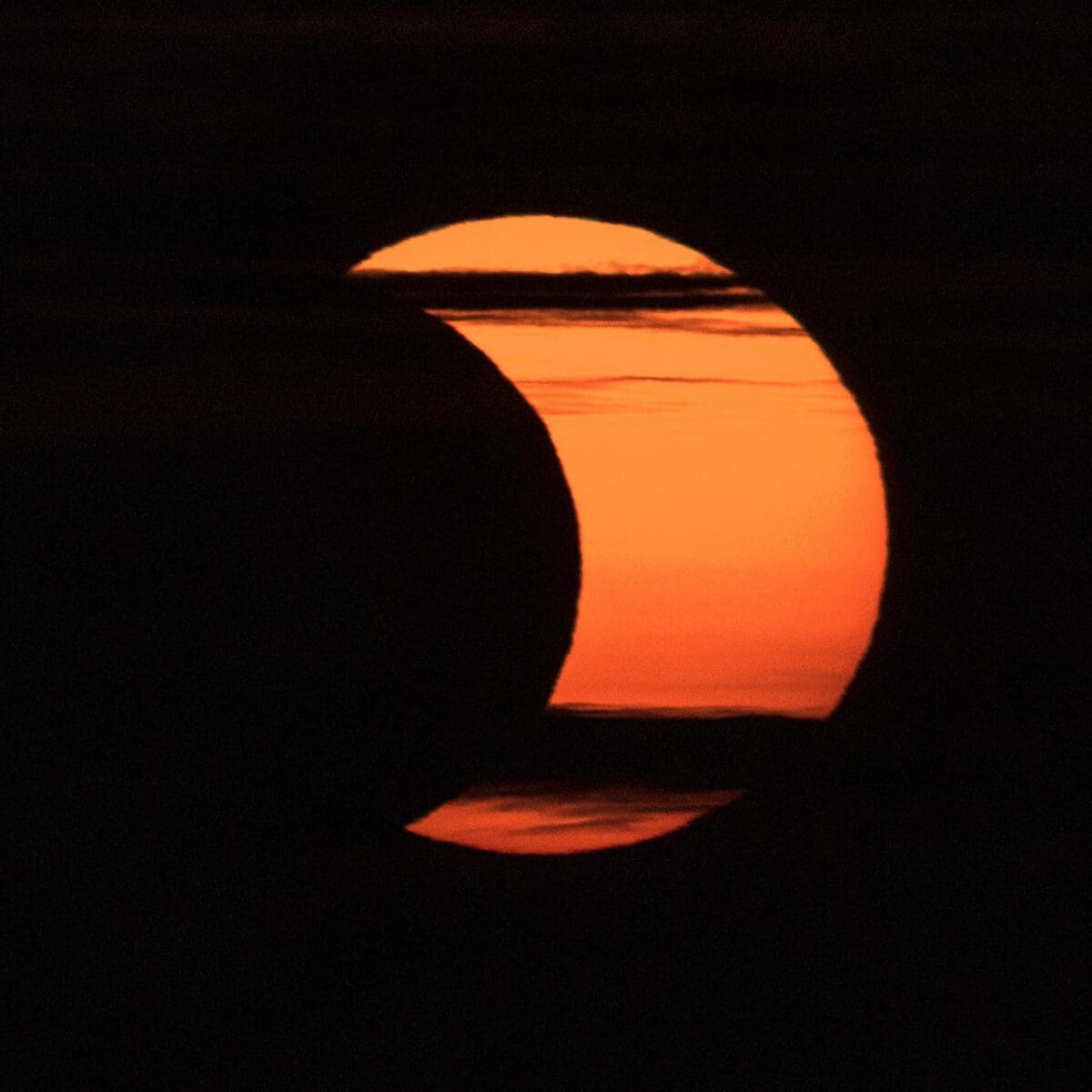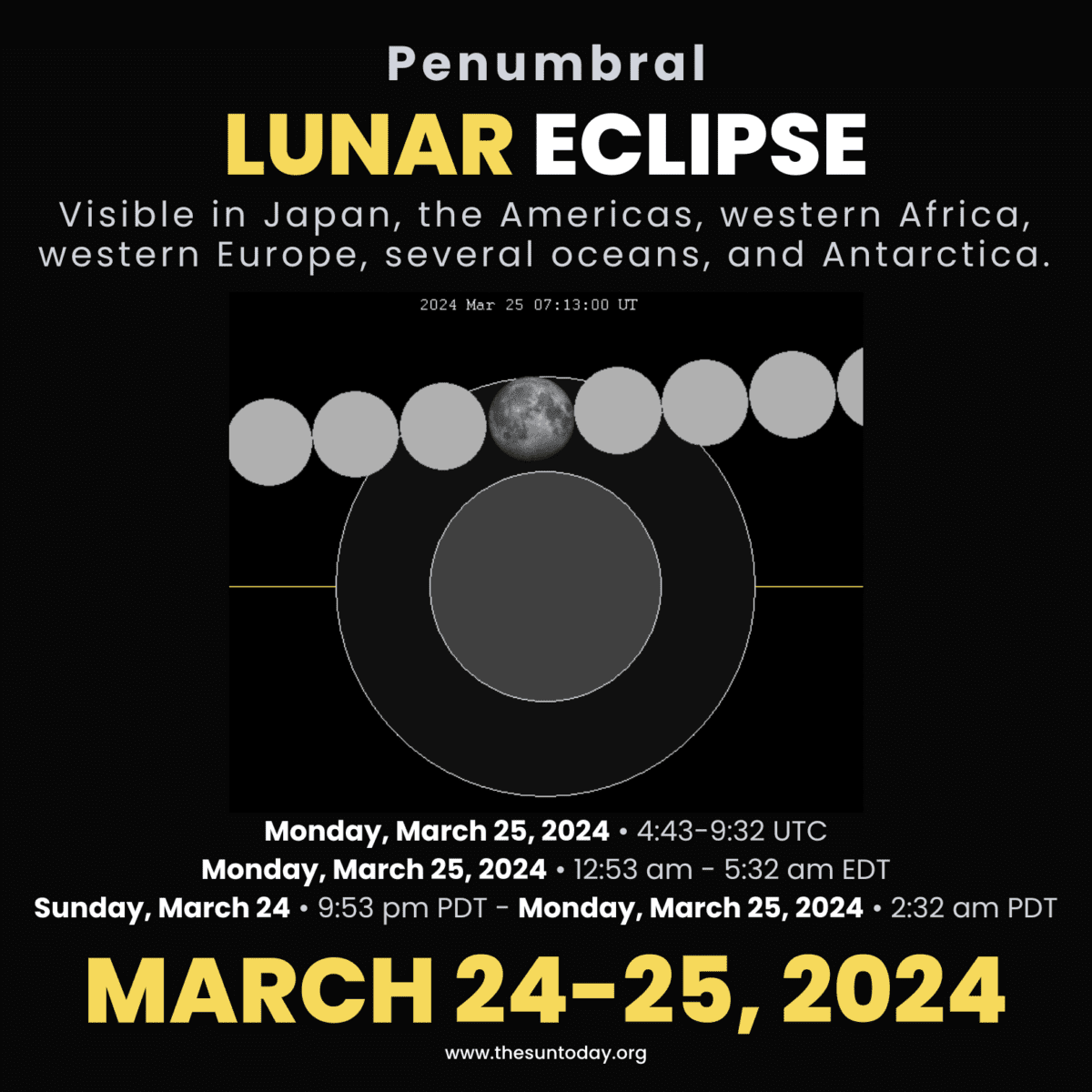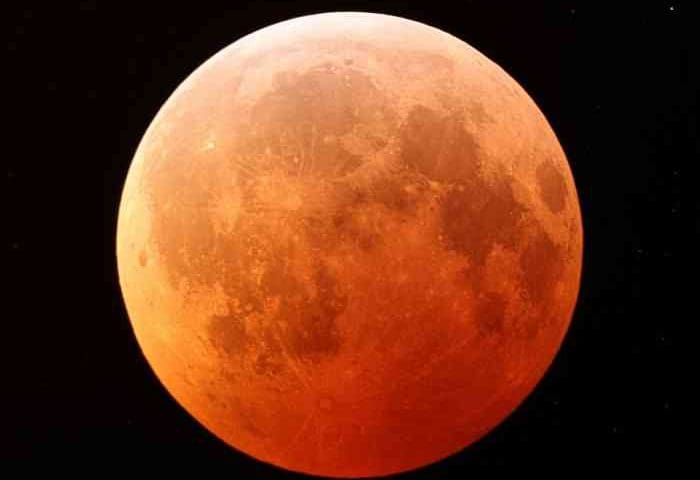
During the total eclipse the moon appears bright orange to blood red.
During the nighttime hours of April 14 or 15 (depending on your time zone), the full moon will pass through Earth’s dark or inner shadow (umbra) creating a total lunar eclipse for most of North and South America. The period of total eclipse lasts for about 1 hour and 20 minutes. Before the moon enters the Earth’s umbra it first enters the penumbra or outer shadow. The total time for the moon to travel through the penumbra, umbra then back through the penumbra is about 3 and 1/2 hours.
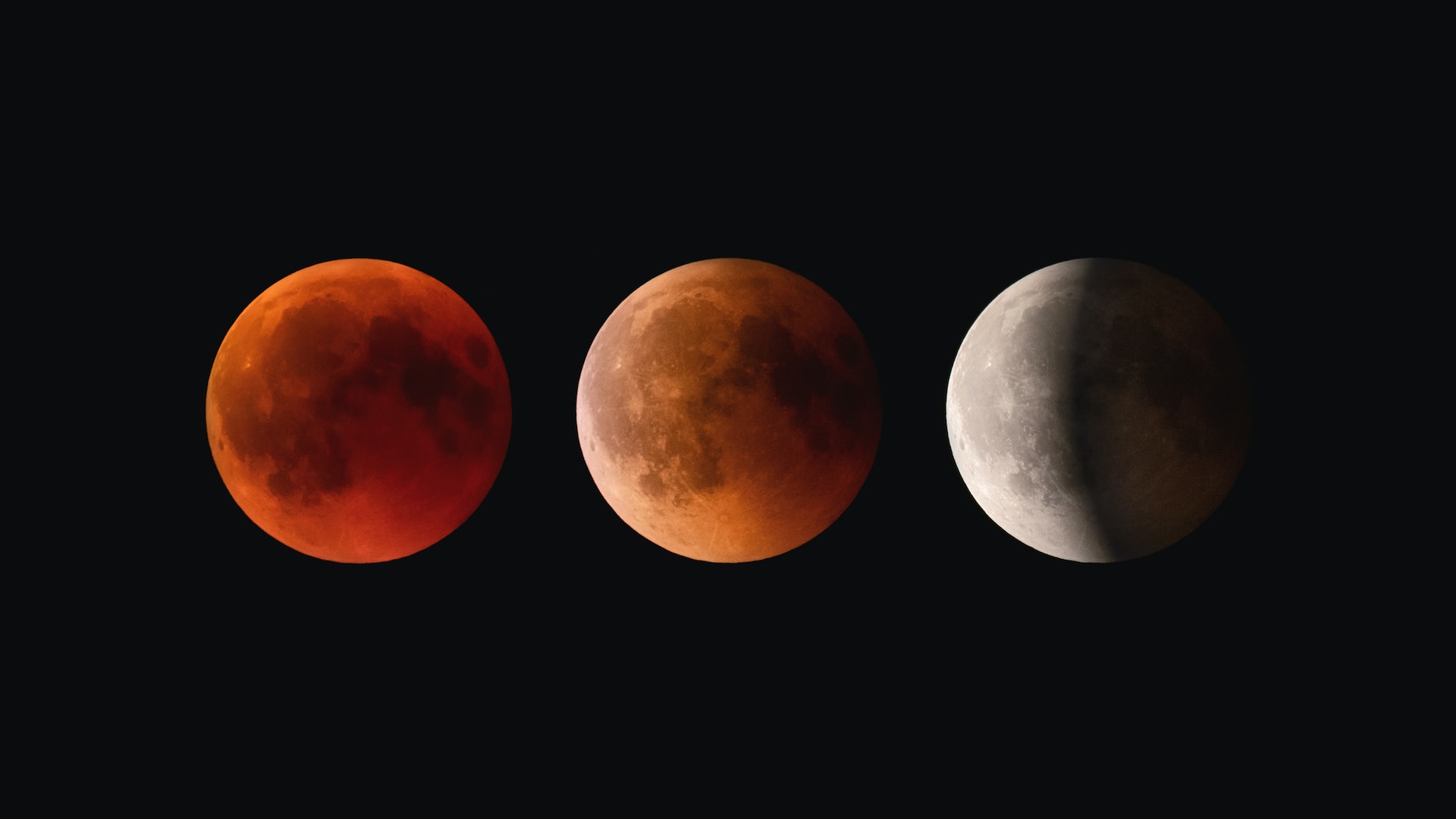
Lunar eclipse – Schauinsland, Freiburg, Germany – Credit: Claudio Testa, Unsplash
For more on check out Visual Appearance of Lunar Eclipses.
Where is the eclipse visible?
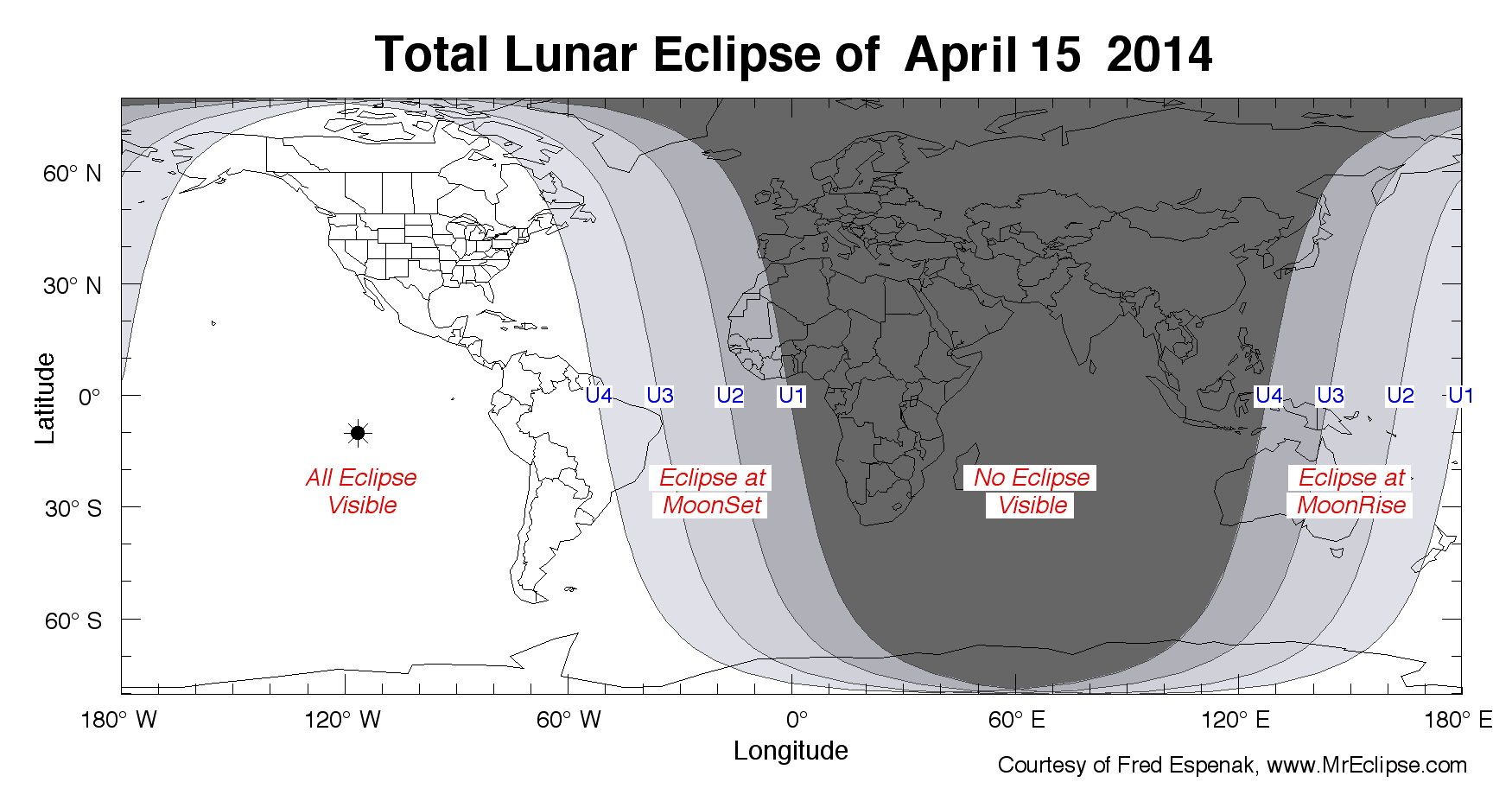
The map above shows the geographic regions of visibility for each phase of the eclipse. The entire eclipse is visible from start to finish in the white (unshaded) portion of the map, while none of the eclipse can be seen from the dark gray areas.
When is the eclipse?
The partial eclipse begins with first umbral contact at 05:58 GMT. Totality is at 07:07 GMT and lasts until 08:25 GMT. The partial phases end at 09:33 GMT. Eclipse times for time zones in the United States and Canada are shown in the following table. Most areas of the United States currently observe Daylight Saving Time (DST). Two exceptions are Arizona (although the Navajo Nation does observe Daylight Saving Time) and Hawaii. For observers in Arizona, use the times listed under Pacific Daylight Time (PDT).
| Total Lunar Eclipse of April 15, 2014 (* Event occurs on evening of April 14, 2014) | ||||||||
| Europe | North America | Pacific | ||||||
| Event | GMT | ADT | EDT | CDT | MDT | PDT | AKDT | HST |
| Partial Eclipse Begins: | 05:58 am | 02:58 am | 01:58 am | 12:58 am | 11:58 pm* | 10:58 pm* | 09:58 pm* | 07:58 pm* |
| Total Eclipse Begins: | 07:07 am | 04:07 am | 03:07 am | 02:07 am | 01:07 am | 12:07 am | 11:07 pm* | 09:07 pm* |
| Greatest Eclipse: | 07:46 am | 04:46 am | 03:46 am | 02:46 am | 01:46 am | 12:46 am | 11:46 pm* | 09:46 pm* |
| Total Eclipse Ends: | 08:25 am | 05:25 am | 04:25 am | 03:25 am | 02:25 am | 01:25 am | 12:25 am | 10:25 pm* |
| Partial Eclipse Ends: | 09:33 am | 06:33 am | 05:33 am | 04:33 am | 03:33 am | 02:33 am | 01:33 am | 11:33 pm* |
For more information on time, see Time Zones. GMT is used here as the standard but it has actually been replaced in astronomy by Coordinated Universal Time (UTC) , which is based on atomic time.
Lunar Eclipse Diagrams
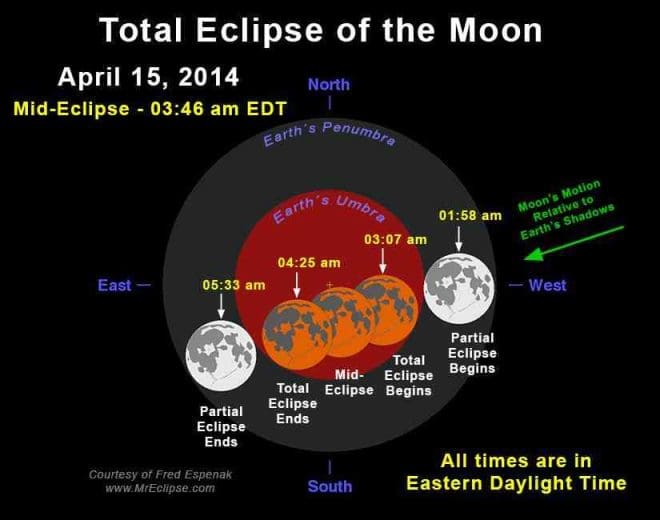
April 2014 eclipse diagram, by Fred Espenak (NASA/GSFC), gives the eclipse times in Greenwich Mean Time or Universal Time. Find more information at http://bit.ly/1qyMFep
Diagrams for different time zones
- Eclipse Diagram for GMT (Greenwich Mean Time)
- Eclipse Diagram for ADT (Atlantic Daylight Time)
- Eclipse Diagram for EDT (Eastern Daylight Time)
- Eclipse Diagram for CDT (Central Daylight Time)
- Eclipse Diagram for MDT (Mountain Daylight Time)
- Eclipse Diagram for PDT (Pacific Daylight Time)
- Eclipse Diagram for AKDT (Alaska Daylight Time)
- Eclipse Diagram for HST (Hawaiian Standard Time)
(To determine the Moon’s altitude at each stage of the eclipse as seen from your city or location, see Javascript Lunar Eclipse Explorer. This web page allows you to calculate the viewing circumstances of all lunar eclipses visible from your city over a five-thousand year period.)
More Information
For more general information about eclipses of all kinds (solar, lunar, etc.) check out the pages from Mr. Eclipse, Fred Espenak, at NASA Goddard as well as his personal eclipse page www.mreclipse.com. For more information on the how, what, why, when and where of lunar eclipses, see the special web page Lunar Eclipses for Beginners. (Note: All the information here is from Fred Espenak.)


